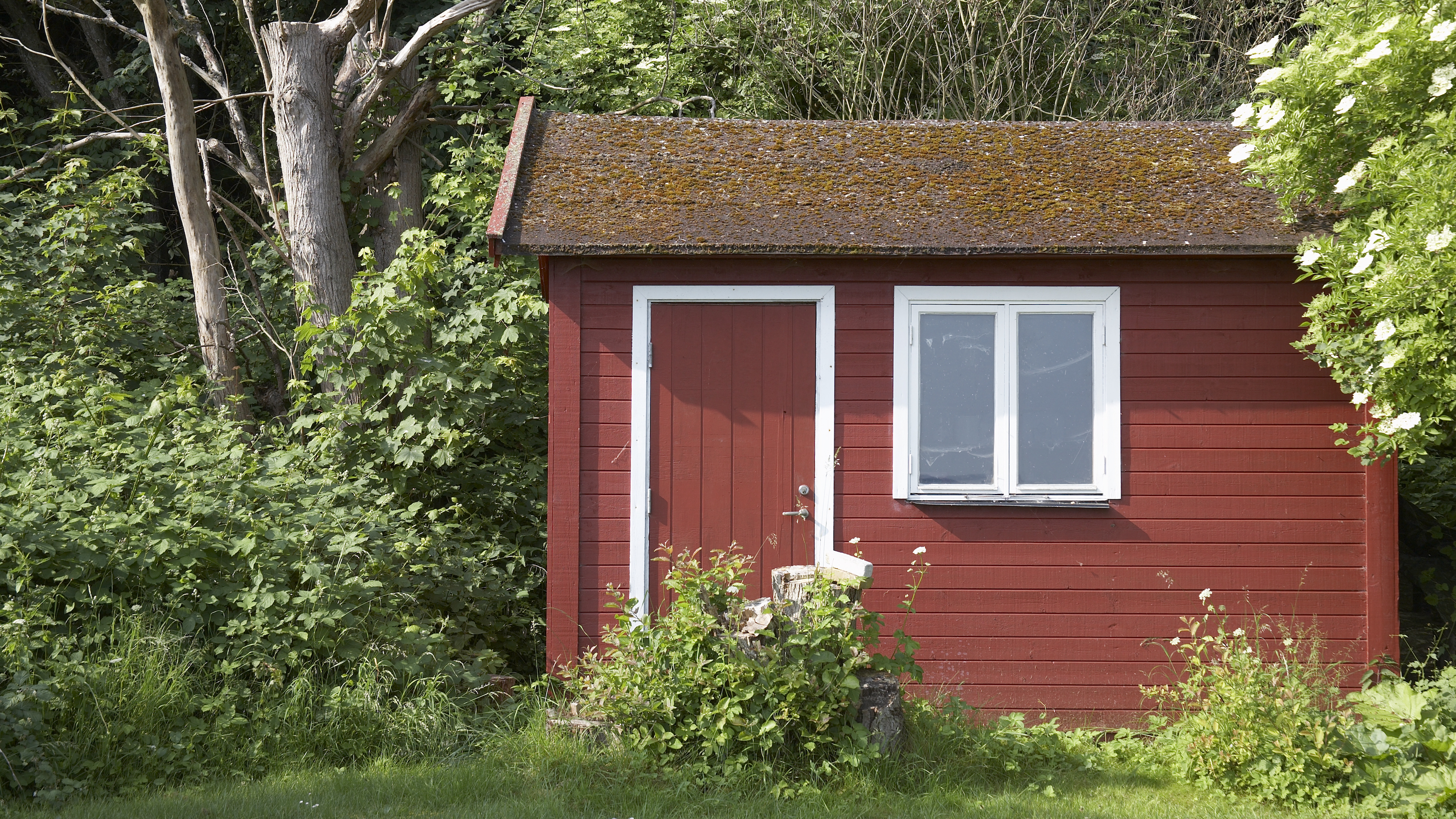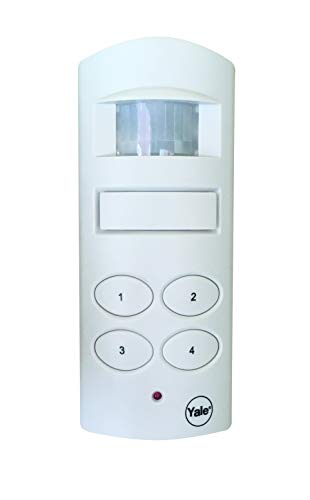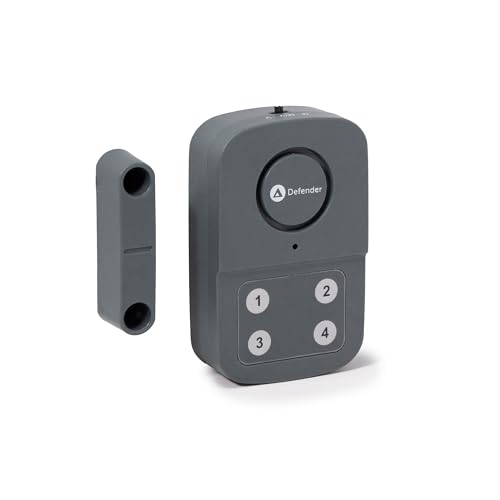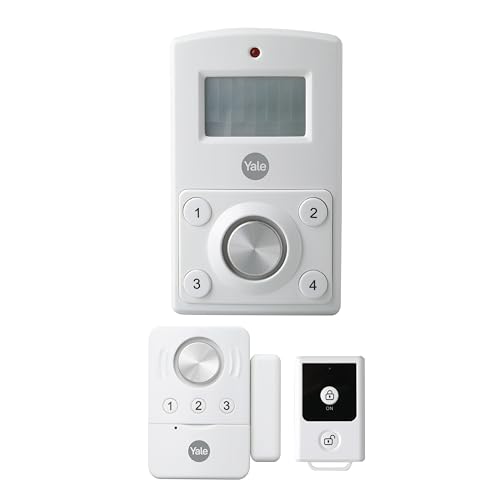How to choose the best shed security alarms and systems to keep the contents safe
A shed alarm can help prevent theft of valuable items, and our guide has the details you need on picking the best to use on its own or as part of a security system

Garden sheds are a top target for thieves, making investing in the best shed security alarms and systems a clever move. Stolen bikes, power and garden tools could represent a substantial loss – and the latter might even help burglars get into the house.
Good home security systems should always include measures for the shed. Some 29 per cent of people had experienced a break-in, or attempted break-in, to a garden outbuilding and two in five of these targeted the shed, a 2025 survey by Aviva found, so a standalone alarm, or a shed security system could prove a worthwhile investment.
Here, we take a look at the best shed security alarms and systems to help keep your valuables secure from thieves. And we’ve also got all the details you need on their features.
Types of shed alarm
Shed alarms use sensors to detect intrusion: those for the door/window; vibration sensors; and motion-detecting or PIR (passive infrared) sensors. An individual alarm might come with just one type of sensor, or might include more than one.
But there’s also a difference between shed alarms in terms of how they signal intrusion: some are siren only, while smart alarms send notifications to your mobile device but may have sirens, too.
Below are the details on the benefits and any downsides of each type of sensor, and on the different ways shed alarms provide an alert.
Door/window shed alarm sensors
Door/window sensors are typically two part magnetic contact sensors. If the door or window is opened, the two parts are separated, setting off the alarm.
Bring your dream home to life with expert advice, how to guides and design inspiration. Sign up for our newsletter and get two free tickets to a Homebuilding & Renovating Show near you.
“They’re straightforward to install, rarely need maintenance, and provide immediate alerts when the shed is opened without permission,” explains garden shed expert Sam Jenkinson of garden building retailer Tiger. “As they only trigger when a door or window is physically opened, they’re also less likely to raise false alarms making them ideal for locations that experience a lot of wind or wildlife movement.”
However, as Sam points out, leave the shed window open and an alarm with this type of sensor wouldn’t be triggered. “They also aren’t effective on their own if your shed has multiple entry points unless you install a sensor at each location,” he says. “For more complex sheds or garden buildings, you’ll want to consider combining contact sensors with additional detection methods to fully secure the structure.”

Sam Jenkinson has been at garden building retailer Tiger for over five years and has built up a vast knowledge and experience in all areas. He is a keen gardener and self-proclaimed “shed head”.
Vibration shed alarm sensors
Vibration sensors detect knocks or impact – in the case of a shed that might be when a burglar tries to force entry through a door or window. “They’re especially well-suited to lightweight or timber-framed sheds, where structural movement is easier to detect,” says Sam Jenkinson.
This type of sensor’s advantage? “They react to forced entry attempts before the intruder even gets inside, so they can act as a strong deterrent, particularly when paired with a loud alarm,” says Sam.
But pay attention to the sensitivity of the sensor. “High winds, heavy rain, and even wildlife can sometimes set them off unnecessarily,” Sam explains. “To get the most from a vibration sensor you should test the sensitivity settings carefully during installation to avoid frequent false alarms.”
PIR shed alarm sensors
PIR or motion-detecting sensors detect the changes in heat emitted by a warm body, like that of an intruder, as it moves across the sensor’s field. These can provide effective coverage of a shed.
There are some downsides, including that only once a burglar is inside will the alarm be triggered, and that your shed alarm could go off because of insects or animals. The weather can cause complications, too. “In very hot conditions, the shed’s internal temperature may match body heat closely enough to reduce the sensor’s effectiveness,” says Sam Jenkinson. “For the best results, pair a PIR sensor with a contact or vibration sensor to catch both entry attempts and internal movement,” he advises.
Acoustic vs smart shed alarms
A shed alarm can alert you to a break-in with noise, or by sending a message to your phone – or both.
“An acoustic shed alarm acts as an immediate deterrent,” explains Anthony Neary, security expert at Safe.co.uk. “Its loud siren is designed to startle an intruder and draw attention, hopefully scaring them off before they can gain significant access or remove items.”
These are often battery-operated, easy to install, and relatively inexpensive, Anthony says.
If you’re out, of course, while a burglar might be put off, you won’t know the alarm has gone off. But opt for a smart alarm instead and you will get an alert. “While many smart alarms also include an audible siren for local deterrence, their primary advantage is the immediate notification you receive directly to your mobile device,” says Anthony.

Anthony Neary is the founder and security expert at home and business security retailers Safe.co.uk. With over 15 years of industry experience, he specialises in security solutions and how to keep properties safe.
Features to look out for
When you’re selecting a shed alarm, there are a number of features you should check for.
Siren noise should make an impact. “A siren of 100 decibels or more is loud enough to startle an intruder and draw attention, even from inside the house or next door,” says Sam Jenkinson. “Even if no one responds immediately, the sudden loud noise is one of the strongest deterrents to opportunistic thieves, especially for sheds that aren’t in direct view of your main living space.”
Battery indicators are a useful feature allowing replacement in good time.
Sensor range If you are choosing a PIR sensor alarm, think about its coverage. A model with an adjustable range can provide effective coverage without false alarms.
Shed security systems
It can be worthwhile to incorporate a shed alarm into the rest of your security system.
“For modern wireless home security systems adding a shed alarm is typically a seamless process,” says Anthony Neary. “Most of these systems operate on a hub-and-spoke model, where a central hub communicates wirelessly with various sensors and devices. You can usually purchase additional shed-specific sensors (such as door/window contacts or motion detectors) that are designed to integrate directly with your existing home system’s hub.
“Installation often involves simply pairing the new sensor with the hub via an app and then mounting it in your shed,” he explains. “Some systems also offer range extenders if your shed is particularly far from your main property, ensuring a reliable connection.”
If you like the idea of a system like this, the Yale IA-340 Sync Smart Home Alarm from Amazon can cover the shed, too, if you add the Yale Outdoor Window and Door Sensor from Amazon.
Older, hardwired home security system? “Integration can be more complex, often requiring professional installation or the use of specific conversion kits that allow wired sensors to become smart and link to a modern smart home platform,” says Anthony.
Shop for shed security alarms
A shed alarm can be a low cost way to boost security if you opt for a standalone design, but it can also be straightforward to add the shed to your smart security system. Worthwhile implementing, too, are the other shed security measures that keep your belongings safer.
Sarah is a freelance journalist and editor writing for websites, national newspapers, and magazines. She’s spent most of her journalistic career specialising in homes.
She loves testing the latest home appliances and products, and investigating the benefits, costs and practicalities of home improvement. She is an experienced renovator and is currently remodelling the ground floor of her new home.
She was Executive Editor of Ideal Home and has worked for Your Home and Homes & Ideas. Her work has published by numerous titles, including The Guardian, channel4.com, Houzz, Grand Designs, Homes & Gardens, House Beautiful, Homes & Antiques, Real Homes, The English Home, Period Living, Beautiful Kitchens, Good Homes and Country Homes & Interiors.



